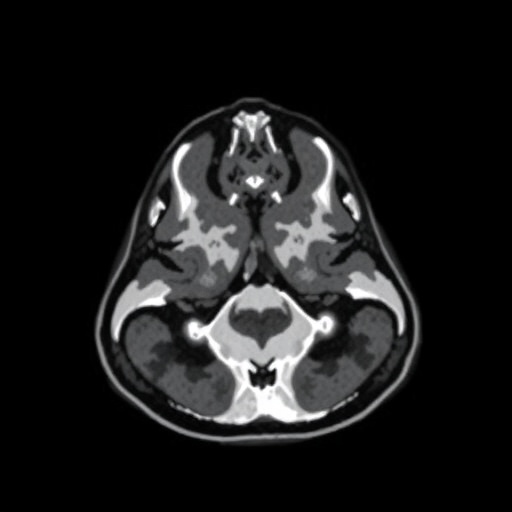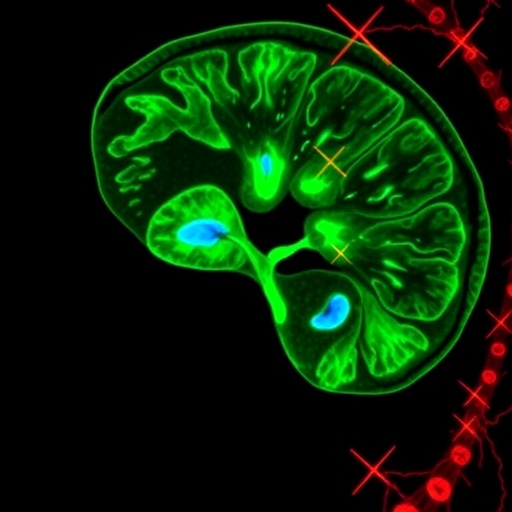In the relentless battle against extensive-stage small cell lung cancer (ES-SCLC), medical researchers are continuously seeking therapeutic strategies that offer hope beyond the limited efficacy of current treatment options. Recent findings published in BMC Cancer introduce a promising second-line treatment regimen combining PD-(L)1 inhibitors and anlotinib, which appears to outshine conventional therapies by significantly extending tumor control and patient survival. This breakthrough could redefine the standard of care for ES-SCLC, a disease notorious for its aggressive nature and poor prognosis.
ES-SCLC accounts for roughly 15% of all lung cancers and is characterized by rapid progression and widespread metastasis at diagnosis, rendering treatment particularly challenging. The current landscape of second-line therapies provides minimal relief, with progression-free survival (PFS) typically limited to a span of two to three months. This scenario underscores an urgent medical necessity: to identify combination strategies that not only inhibit tumor growth more effectively but also modulate the tumor microenvironment to circumvent immune evasion and resistance mechanisms.
The underlying scientific rationale for pairing PD-(L)1 inhibitors, a class of immune checkpoint blockers, with anlotinib, a potent anti-angiogenic agent, stems from a growing body of evidence about their synergistic interplay. Immune checkpoint inhibitors have revolutionized cancer treatment by unleashing anti-tumor immunity; however, their efficacy is often hampered by the tumor’s immunosuppressive milieu. Anlotinib’s ability to disrupt abnormal blood vessel formation curtails nutrient supply to tumors and reprograms the pro-tumoral microenvironment, reinforcing the immune system’s capacity to recognize and eliminate cancer cells when combined with PD-(L)1 blockade.
.adsslot_UutbXVpfYh{ width:728px !important; height:90px !important; }
@media (max-width:1199px) { .adsslot_UutbXVpfYh{ width:468px !important; height:60px !important; } }
@media (max-width:767px) { .adsslot_UutbXVpfYh{ width:320px !important; height:50px !important; } }
ADVERTISEMENT
In a comprehensive retrospective analysis, researchers aggregated data from 389 ES-SCLC patients across three major cancer centers. These patients had all undergone second-line treatment with one of three protocols: PD-(L)1 inhibitors plus anlotinib (I + A), PD-(L)1 inhibitors combined with chemotherapy (I + C), or chemotherapy alone (C). The study meticulously compared objective response rates (ORR), disease control rates (DCR), progression-free survival (PFS), overall survival (OS), and the safety profiles among these cohorts, providing a real-world insight into the clinical impact of these therapeutic modalities.
Results from this large cohort revealed that the I + A combination profoundly improved clinical outcomes. The ORR in the I + A group reached 30.2%, nearly doubling the response observed in the I + C and C groups, which hovered around 17.6% and 18.0% respectively. Even more telling was the disease control rate, a critical indicator of how effectively the tumor burden is contained over time, which surged to 82.6% in the I + A cohort compared to significantly lower percentages in the other groups.
Perhaps the most compelling advantage of the I + A regimen lies in the pronounced extension of survival metrics. Median progression-free survival—a measure of the interval before disease worsens—was stretched to 7.2 months under I + A treatment, contrasting sharply with 4.6 months for I + C and 3.4 months for chemotherapy alone. Equally remarkable was the overall survival benefit; I + A recipients experienced a median overall survival of 33.5 months, an almost twofold increase relative to the other studied regimens.
This improved efficacy of the PD-(L)1 inhibitors and anlotinib combination was observed irrespective of prior exposure to first-line immune checkpoint inhibitors, signaling broad potential for patients regardless of their initial treatment history. Importantly, subgroup analyses identified that female patients and those with oligometastasis—a condition characterized by three or fewer metastatic sites—derived the greatest advantage from I + A therapy. Such findings may pave the way toward more personalized treatment paradigms for ES-SCLC.
Safety considerations remain paramount when introducing new drug combinations, particularly in a fragile patient population. Encouragingly, the I + A regimen demonstrated a favorable safety profile, with the lowest occurrence of severe (grade 3 or above) myelosuppression compared to other second-line options. This reduction in hematological toxicity is crucial for maintaining patient quality of life and the feasibility of sustained treatment courses.
However, the emerging therapy was not without adverse events. The incidence of immune-related pneumonia, a potentially life-threatening complication, was higher in the I + A group compared to controls, though still relatively rare. Hemoptysis, or coughing up blood, also appeared more frequently among patients on this combination. These side effects underscore the necessity for vigilant monitoring and prompt management during treatment but do not diminish the overarching benefit in disease control and survival.
The success of the PD-(L)1 inhibitors plus anlotinib regimen reinforces an evolving understanding of the tumor microenvironment’s complexity in small cell lung cancer. By simultaneously reinvigorating anti-cancer immune responses and targeting tumor vasculature, this dual strategy addresses multiple facets of tumor biology that singular treatments fail to adequately control. It also exemplifies how translational research can bridge molecular insights with clinical advances.
While these retrospective findings are compelling, prospective randomized clinical trials are essential to validate the efficacy and safety of I + A treatment on a larger scale and to establish standardized guidelines for its incorporation into therapeutic algorithms. Additional research is also needed to elucidate molecular biomarkers that predict which patients will benefit most, thereby optimizing treatment individualization.
Beyond ES-SCLC, these results ignite curiosity about the broader applicability of anti-angiogenic and immune checkpoint inhibitor combinations across other malignancies characterized by aggressive behavior and immune evasion. The paradigm demonstrated here might well serve as a blueprint for expanding the therapeutic arsenal against refractory cancers worldwide.
As oncology moves toward increasingly sophisticated and multipronged therapies, the convergence of immune modulation and vascular targeting holds particular promise. The ability to transform a suppressive tumor microenvironment into one supportive of immune-mediated tumor eradication could mark a turning point in the management of cancers historically deemed intractable.
In conclusion, the combination of PD-(L)1 inhibitors and anlotinib presents a promising avenue in second-line treatment for patients with extensive-stage small cell lung cancer. This innovative regimen not only prolongs survival significantly but also maintains a manageable safety profile, raising hope for improved patient outcomes in a disease with historically bleak prognoses. The oncology community eagerly anticipates future studies that will solidify this combination’s role and potentially expand its reach to other challenging cancer types.
Article Title:
Efficacy of PD-(L)1 inhibitors plus anlotinib in the second-line treatment of extensive-stage small cell lung cancer
Article References:
Zhang, J., Wu, Z., Wang, S. et al. Efficacy of PD-(L)1 inhibitors plus anlotinib in the second-line treatment of extensive-stage small cell lung cancer.
BMC Cancer 25, 1070 (2025). https://doi.org/10.1186/s12885-025-14458-5
Image Credits: Scienmag.com
DOI: https://doi.org/10.1186/s12885-025-14458-5
Tags: advancing standard of care for lung canceranlotinib for small cell lung canceranti-angiogenic agents in cancer treatmentcombination therapies for ES-SCLCenhancing tumor control in cancerextensive-stage small cell lung cancer treatmentimmune checkpoint inhibitors in oncologyimproving patient survival in SCLCovercoming resistance in lung cancer therapyPD-(L)1 inhibitors in lung cancer therapysecond-line treatments for lung cancertargeting tumor microenvironment in cancer therapy





